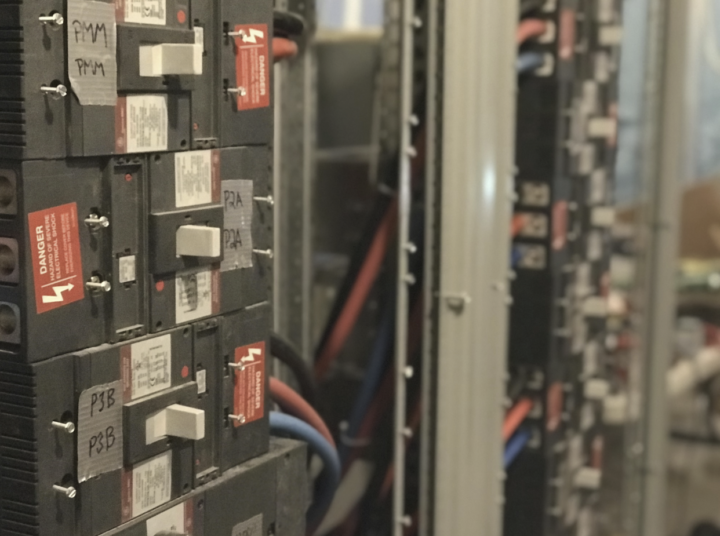The following contribution is from another author.
Electricity powers the modern world, from home appliances to massive industrial equipment. However, handling electrical power safely and reliably is an enormously complex job. At the heart of any electrical system is a critical component known as switchgear, which routes and controls the flow of electricity. Learning the ins and outs of switchgear can show how our amazing electrical grids operate.
So, what exactly is switchgear? It is a general term for an assembly of electrical disconnects, fuses, and main switchboards or circuit breakers used to control, meter, and protect electrical equipment. Switchgear serves as the brains of the electrical system, directing the safe flow of large currents and protecting expensive infrastructure should faults occur. Switchgear is an indispensable tool for both power generation and consumption.
Types of Switchgear
There are two main categories of switchgear used in the electrical industry:
Low Voltage Switchgear
As the name suggests, this type handles voltages up to 1000V and is the most common switchgear for commercial and residential buildings. The simple on/off control of appliances in your home uses a low-voltage switchgear. Standard low voltage switchgear includes:
- Fusible Switches: Enclose replaceable metal fuse elements that melt during overcurrent conditions.
- Circuit Breakers: Detect overloads or short circuits and interrupt current flow. It can be reset to restore power when issues are resolved.
- Contactors: Electrically controlled switches are used where remote or automated on/off controls are needed and are often used to start and stop motors and control lighting.
Medium & High Voltage Switchgear
Any voltages above 1000V are considered high voltage. This beefy switchgear handles the intense currents from utility generation down to neighborhood transformer banks. We rely on them to energize high voltage lines during storms and protect expensive infrastructure. Key components include:
- Load Interrupter Switches: Manually operated air break switches that utilize insulating material to allow safe disconnects of energized high voltage circuits up to 38kV.
- High Voltage Fuses: Current limiting fuses that contain silver, copper or zinc wire elements that melt rapidly during overloads. Used up to 38kV.
- High Voltage Circuit Breakers: Utilize a dielectric medium like insulating oil or an arc-quenching gas to interrupt high voltage currents safely and rapidly. Used at transmission voltages above 38kV. Often electronically controlled.
- Protective Relays: Sense abnormal or dangerous conditions and initiate tripping actions faster than mechanical breakers to minimize infrastructure damage. It can detect issues like phase mismatches, over/under voltage, frequency deviations, and ground faults.
Proper coordination between protective relays, breakers, fuses and switches results in reliable zone protection that isolates problems while maintaining supply to unaffected sections. Switchgear must withstand immense mechanical forces and heating from interruption of heavy short circuit currents measured in tens of thousands of amps.
Where is Switchgear Used?
Switchgear use cases span power generators, substations, industrial environments and buildings:
- Power Plants: Generate electricity using generators then route varying voltages with switchgear to step-up transformers.
- Transmission Substations: Use outdoor switchgear to connect transmission voltage lines from distant power plants and interconnect with neighboring utility substations.
- Distribution Substations: Transform and route electricity from transmission lines using switchgear down to distribution voltage for residential neighborhoods and commercial areas up to 38kV.
- Industrial Facilities: Rely on medium voltage switchgear like 5kV metal-clad switchgear to interface powerful electromechanical processes with incoming utility feeders. Common in factories, mines, wastewater treatment and infrastructure.
- Commercial Buildings: Use low voltage switchgear like 480/277V boards to distribute power from dual utility feeds into major building loads like elevators, air conditioning and lighting.
So in summary, anytime electricity needs to be directed, transformed and protected – which is nearly everywhere! – You can bet Switchgear is involved in intelligently controlling the flow. Understanding where switchgear fits into the power delivery architecture highlights how impactful yet behind-the-scenes this equipment is for everyday life.
Inside a Switchgear Assembly
We’ve covered Switchgear’s role, from power stations to building infrastructure. Now let’s go over common internal components inside these important electrical assemblies:
- Enclosure
The large metallic housing around switchgear serves several purposes:
- Safety barrier from dangerous high voltage components
- Mounting points for internal components
- Electrical ground reference for protection schemes
- Environmental and arc flash protection
Common enclosure types include metal-clad, metal-enclosed, non-walk-in modular rooms. Arc-resistant designs help direct extremely hot arc plasma gasses away from personnel.
- Bus Bars
These beefy strips of high conductivity copper or aluminum distribute power between components. Insulated bus bars are sized to safely carry currents often measured in thousands of amps across various circuits. Proper phase spacing prevents arcs between phases.
- Switching Mechanism
These devices connect and disconnect electricity flow for downstream equipment like transformers and panelboards. Switch types are detailed earlier according to voltage class. Remote operation allows changes from a safe control room.
- Protective Relays
Microprocessor-based relays continuously monitor electrical parameters through current and potential transformers. Relays trip breakers rapidly after detecting issues to prevent fire, injury or blackouts. Sophisticated communications integrate relays together for selectivity.
- Monitoring Equipment
Instrument transformers, kWh meters and other monitors allow operators to track critical data like voltage, load and power quality metrics for preventative insights before problems arise. Environmental sensors help identify electrical fires and overheating issues.
Proper specification, maintenance and testing requires understanding switchgear construction and relation to the overall electrical distribution system. Trained technicians skillfully utilize components already described to keep switchgear operating reliably 24/7 year after year.
Future of Switchgear Technology
Many advances aim to improve switchgear safety, lifecycle costs and environmental impact:
- Smart Switchgear: Integrates monitoring, protection and control equipment with sensors and communication interfaces. Advanced algorithms spot abnormalities earlier and guide selective trip coordination.
- Green Switchgear: Utilizes more sustainable insulating mediums like clean air over tanked oil while minimizing hazardous SF6 emissions. Also integrates eco-friendly insulation and recyclable materials.
- Compact Modularity: Optimizes footprint and standardizes designs for flexibility. Focuses on accessibility, ease of maintenance, and quick replacement.
- Arc-Resistant Construction: Redirects superheated arc gasses away from operators and limits explosion damage better than traditional metal-clad gear. Withstands up to 50kA faults.
In summary, smart grid evolution will rely heavily on intelligent switchgear advancements capable of keeping up with increasing renewable energy integration, density of edge devices, and aging infrastructure needs.
Conclusion
As the behind-the-scenes workhorse of electrical systems, switchgear reliably connects vital power generation to homes and businesses year after year. Whether referring to small fusible panels or gigantic utility substations, switchgear’s critical role in directing electricity safely and selectively can not be overstated. Advances in switchgear functionality and modularity will power the world for decades.
















